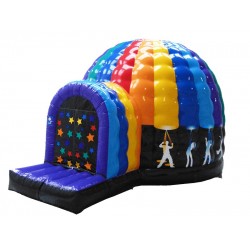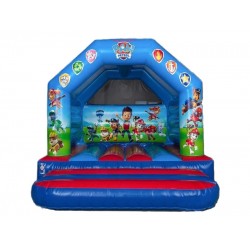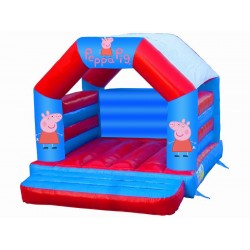Can You Use a Bouncy Castle Near Water Safely?

Bouncy castles are a delightful addition to any outdoor event, providing hours of fun for children. However, if you're considering setting one up near water—be it a pool, lake, or beach—there are several important safety considerations to keep in mind. Let’s delve into the topic of using bouncy castles near water and how to do so safely.
1. Understand the Risks
While bouncy castles are generally safe, placing them near water introduces certain risks. The primary concern is the potential for slips and falls. Wet surfaces can lead to accidents, particularly if children jump from the bouncy castle into the water or vice versa. Additionally, strong winds can cause the inflatable to shift or topple over, posing further risks when water is nearby.
2. Choose the Right Location
If you decide to set up a bouncy castle near water, selecting the right location is crucial. Ensure that the inflatable is positioned a safe distance away from the water's edge. This not only reduces the risk of children accidentally falling into the water but also provides ample space for safe play. Ideally, create a buffer zone of at least 10-15 feet between the bouncy castle and the water.
3. Supervise at All Times
Supervision is key when children are playing near water and inflatable structures. Designate responsible adults to keep a close eye on the children using the bouncy castle, especially those who might be tempted to jump into the water. It’s essential to ensure that the kids understand the boundaries and safety rules regarding both the bouncy castle and the water.
4. Set Clear Rules
Establishing clear rules can help keep children safe during the party. Make it a rule that jumping off the bouncy castle into the water is not allowed. You can also designate specific play areas, ensuring children understand where they can and cannot go. Remind them of the importance of using the bouncy castle safely and what to do if they feel they might slip.
5. Monitor Weather Conditions
Weather plays a significant role in safety when using a bouncy castle near water. Rain or strong winds can increase the risk of slips and falls. Be prepared to close down the bouncy castle if the weather turns inclement. If you notice that the inflatable is becoming wet or if water is splashing onto it, it’s best to take a break from bouncing until conditions improve.
6. Consider Water-Resistant Inflatables
Some bouncy castles are designed specifically for use near water and come with water-resistant features. These inflatables may include built-in slides that lead into a pool or splash zone. If you plan to host a water-themed party, consider renting or purchasing a bouncy castle designed for water play, ensuring it meets all safety standards for such environments.
In Conclusion
While it is possible to use a bouncy castle near water safely, it requires careful planning, supervision, and adherence to safety guidelines. By understanding the risks, selecting the right location, and establishing clear rules, you can create a fun and safe environment for children to enjoy. Remember, the key to a successful party is ensuring that everyone can have a good time while staying safe!




Leave a Comment